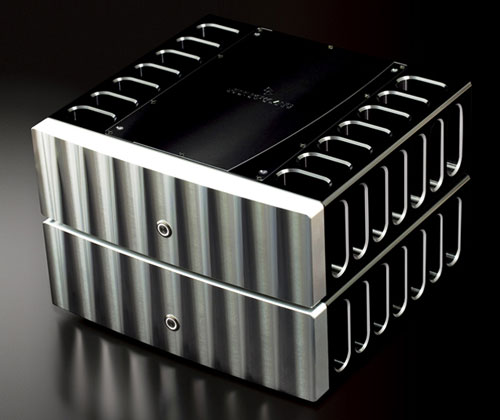
Several years ago, I caught my first glimpse of Jeff Rowland's 625 power amp at the Munich show. A compact stereo chassis, it had all the gorgeous machined casework you'd expect from the marque, a higher rated output than its size would suggest and a total weight that definitely put it in the man-portable class. All that and a proper, class-AB output stage too -- what's not to like?
Scenting something of a return to the company's roots, I lost no time filing my review request, and when a factory-fresh unit finally appeared, it proved well worth the wait. At a time when power outputs and chassis size both seemed to be heading for the hills, closely accompanied by their associated price tags, the 625, it seemed downright sensible in comparison. Manageable in every sense of the word, it combined easily accommodated dimensions, bombproof build with a genuinely useable power output. What's more, its ability to step away from the music, to pass the signal without leaving its grubby fingerprints or DNA all over it, made for real long-term listening pleasure. It rapidly became a staple in the reviewing lineup, a go-to product that could be relied on to let its partners shine and show their true colors.
And so things might well have remained, except for the arrival of the KEF Blade. On paper, the 625 looks like the perfect match for the innovative, coherent-source loudspeaker design, its light-touch signature and open, unforced midband dovetailing perfectly with the seamless spatial presentation and natural weight, agility and tonality of the bottom end. But all was not quite as it seemed. At first things were just peachy, but the KEF's low distortion combined with the amplifier's sonic invisibility led to a less-than-restrained use of the volume control -- with the result that every time an orchestra hit a crescendo, the brass section ended up in my lap, a very nasty, glarey brass section too! Either there was something awry with the tweeter or the amp was running out of steam. This rather long and convoluted preamble serves to excuse, or at least to explain, my request for a pair of 725 monoblocks. Power-crazed megalomania had nothing to do with it -- honest.
The 725 is externally virtually indistinguishable from its stereo brother: the same beautifully finished but largely featureless chassis, the same illuminated standby switch on the front panel, the same suite of socketry on the back panel, just half as much of everything. Both the 625 and 725 offer balanced input only, so on the monoblocks you get one XLR socket, Cardas binding posts for speaker connection (one pair on either side of the chassis which is great for convenience and cable dressing) and a 20A IEC power connector, along with the main power switch. That's your lot.